- Home
- A. S. Byatt
The Virgin in the Garden
The Virgin in the Garden Read online
ALSO BY A. S. Byatt
FICTION
Shadow of a Sun
The Game
Still Life
Sugar and Other Stories
Possession
CRITICISM
Degrees of Freedom: The Novels of Iris Murdoch
Unruly Times: Wordsworth and Coleridge in Their Time
Passions of the Mind: Selected Writings
FIRST VINTAGE INTERNATIONAL EDITION, JANUARY 1992
Copyright © 1798 by A. S. Byatt
All rights reserved under International and Pan-American Copyright Conventions. Published in the United States by Vintage Books, a division of Random House, Inc., New York. Originally published in Great Britain by Chatto and Windus, London, in 1978. First published in the United States by Alfred A. Knopf, Inc., in 1979.
The author wishes to thank The Times for permission to reprint ‘Dawn of the Year’ in Part II. Grateful acknowledgment is also made to Princeton University Press for permission to reprint an excerpt from The Collected Works of C.G. Jung, trans. R.F.C. Hull, Bollingen Series XX. Vol. 12: Psychology and Alchemy copyright 1953, © 1968 by Princeton University Press. Excerpts reprinted by permission of Princeton University Press and Routledge & Kegan Paul.
Library of Congress Cataloging-in-Publication Data
Byatt, A. S. (Antonia Susan), 1936—
The virgin in the garden / A. S. Byatt. — 1st Vintage
International ed.
p. cm.
Originally published in Great Britain by Chatto and Windus in 1978.
eISBN: 978-0-307-81953-6
I. Tide.
PR6052.Y2V57 1992
823′.914—dc20 91-50495
v3.1
CONTENTS
Cover
Other Books by This Author
Title Page
Copyright
Dedication
PROLOGUE The National Portrait Gallery: 1968
PART I: A FUGITIVE VIRTUE
1. That Far Field
2. In the Lion’s Den
3. The Castle Mound
4. Women in Love
5. Daniel
6. Picture-palace
7. Prospero
8. Ode on a Grecian Urn
9. Meat
10. In the Tower
11. Play Room
12. Nursery Garden
13. In the Humanist’s House
14. Cosmogony
PART II: A FLOWERY TALE
‘Dawn of the Year’
15. Easter
16. Hypnagogy
17. Pastoral
18. Anadyomene
19. Mammon
20. Paterfamilias
21. The Traveller in Dolls
22. Much Ado
23. Comus
24. Malcolm Haydock
25. Good Wives
26. Owger’s Howe
27. Coronation
28. On the Interpretation of Dreams
29. Wedding
30. Masters’ Garden
31. Honeymoon
PART III: REDIT ET VIRGO
32. Saturnalia
33. Annunciation
34. The Dragon at Whitby
35. Queen and Huntress
36. Interludes in Two Towers
37. The First Night
38. St Bartholomew
39. Party in the Pantheon
40. Last Night
41. The Bilge Pond
42. The Virgin in the Garden
43. Seas of Blood
44. Returns
About the Author
For my son
Charles Byatt
July 19th 1961 – July 22nd 1972
PROLOGUE
The National Portrait Gallery: 1968
She had invited Alexander, whether on the spur of the moment or with malice aforethought he did not know, to come and hear Flora Robson do Queen Elizabeth at the National Portrait Gallery. He had meant to say no, but had said yes, and now stood outside that building contemplating its sooty designation. She had also, for good measure, invited everyone else present at a very ill-assorted dinner party: only Daniel, beside himself, had accepted. There had been a young painter there who had declared that the words National and Portrait were in themselves enough to put him off, thanks. It was not, this decided person declared, his scene. It was Alexander’s scene, Frederica had firmly said, and Alexander had demurred, although he had always had a fondness for the place. Anyway, he had come.
He considered those words, once powerful, at present defunct, national and portrait. They were both to do with identity: the identity of a culture (place, language and history), the identity of an individual human being as an object for mimetic representation. Both mattered, or had mattered, to Alexander. He found himself, nevertheless, aesthetically amused by his surroundings. There was the black circling curve of railings to which was tied a repeating series of pale reproductions of the Darnley portrait of Elizabeth Tudor, faded coral, gold, white, arrogance, watchfulness, announcing “People, Past and Present”.
On the way he had passed several recruiting posters for the First World War, pointing accusatory fingers at him, and a shop called “I was Lord Kitchener’s Valet”, full of reproduced bric-à-brac of the British Empire, backed not by bugles calling but by the universal clang and moan of amplified electric guitar. On a Shaftesbury Avenue hoarding he had seen a monstrous image of a rear view of a brawny worker, naked to the waist and from there enclosed in tight-buttoned red, white and blue breeches. “I’m Backing Britain” was scrawled across this person’s bulging backside.
Above him, on the steps of the National Gallery were the peripatetic folk with the new ancient faces. Jesus boots, kaftans, sporadic bursts of song or tinkling breaking a tranquillised hush.
Alexander went in. She was not there, as he might have known. The Gallery had changed since his last, not recent, visit. It had lost some of its buff and mahogany Victorian solidity and had acquired a stagey richness, darkly bright alcoves for Tudor icons on the stairway, not, he thought, unpleasing. He went up to look for the Darnley portrait, which had been removed for the performance, so he was left to sit on a bench contemplating an alternative Gloriana, raddled, white-leaded, bestriding the counties of England in thunderstorm and sun, painted an inch thick, horse-hair topped and hennaed, heavy with quilted silk, propped and constricted by whalebone.
The crowd flowed between him and the paintings. It seemed to have overflowed from the steps of the National Gallery, variously uniformed, uniformly various. Grimy thonged feet under, silky, fluffy, matted beards over, sari and saffron robe. Military jackets from Vietnam and the Crimea, barely sprouted moustaches and poultry-thin necks popping out of gilded collars above tarnished epaulettes. Rubber-hard girls in silver tights and silver boots, with silver skirts bouncing on compact rumps. Limp girls in black velvet dangling meshed-metal purses, with paper flowers in the coils and curtains of their artificial hair. Several George Sands, Mesdemoiselles Sacripant, in trousers, frilled shirts, and velvet berets. Shuffling, sexless people in drooping garments made from the ill-printed Indian bedspreads that had gathered dust in the seaside attics of Alexander’s childhood. Some carried brand-new Benares begging bowls. Like cows they clattered new shiny bells round their necks. Alexander had seen these for sale in dozens of street-stalls. The vendors had little placards saying that the bells symbolised inwardness.
Under English macintoshes, English tweed, English cashmere, American tourists edged doggedly forward, wired from plastic knobs in the ears to the inward murmur of the boxed soundguides. It was no doubt whispering about the iconic and yet realistic qualities of these English Renaissance images, barbaric and crude two centuries after the solid and airy glori
es of the High Renaissance, yet a style that was beginning to know what it was. A secular style, a new beginning after the iconoclastic excesses under young Edward VI, when angels, Mothers and Children had flared and crackled in the streets, immolated to a logical absolute God who disliked images.
Alexander thought, surveying Thomas Cromwell and the mock-soldiers, about the nature of modern parody. It seemed to him who did not understand or like it, undirected and aimless: they imitated anything and everything out of an unmanageable combination of aesthetic curiosity, mocking destructiveness and affectionate nostalgia, the desire to be anything and anywhere other than here and now. Did these soldiers loathe or secretly desire warfare? Or did they not know? Was it all a considered “statement”, as the painter would have said, about accommodated and unaccommodated man? Or was it just a hysterical continuation of childhood dressing-up? Alexander himself had considerable knowledge about the history of clothing, could place a shift of seam or change of cut in relation to tradition and the individual talent almost as well as he could a verse-form or a vocabulary. He watched his own clothes and his own poetry in the light of these delicate shifts of subdued innovation. But he was apprehensive that at this time there was no real life in either.
He was nevertheless, at fifty, in well-cut olive gabardine, cream silk shirt and gold chrysanthemum tie, a handsome man.
He went out again, against his better judgment, to look for Frederica. He leaned over the balcony above the stairwell. Directly below him, in front of a portrait of the late King, his Queen, and two princesses in vermilion lipstick, drooping skirts and sling-back shoes, all dwarfed entirely by the huge canvasful of pale green good taste and glitter of chandeliers and silver teapots in a drawing-room in Windsor, Frederica was engaged in a feinting, weaving dance, round a quilted triangular stool, with an unknown man. This man was large, and, foreshortened from above, consisted of a wide expanse of glossy black PVC raincoat, crisping out round a bulky body, and a heavy mass of straight blond hair, with a sheen like cool butter.
This man reached across the stool and caught her wrist: she reached up, spoke in his ear, kissed him under it, and twisted away. He reached after her as she moved off, and ran the flat of one large hand down her spine, over her tail, cupping it, resting there. It was a gesture of complete, and public, intimacy. He then shouldered his way out through the crowd, not looking back. Frederica laughed, and came on up. Alexander retreated.
“Ah, there you are. Have you seen Daniel? I’m amazed he thought fit to come.”
Alexander did not answer, since he could see Daniel coming along the landing, a fat man in black cords and black turtleneck sweater. He came heavily up to them and nodded.
“Well met,” she said. “We three. Were you given gifts on the way in?”
“No,” said Daniel.
She extended her hands. In one was a greenish square of mirror glass, possibly a tiny bathroom tile. In the other was a crushed strawberry cloakroom ticket with 69 on one side and LOVE stamped on the other in mauve ink.
“Pressed on me by a platinum blonde Pocahontas and a cowboy in a green eyeshade. Is it a joke, or an earnest message?”
“Both,” said Alexander. “All our earnest messages are couched as jokes and we take our jokes deadly seriously. We frame them and cover our gallery walls with them. The great British Sense of Humour, cross-fertilised by American self-consciousness, the Latin absurd and the Oriental finger-snap or educative blow on the ear. Your messages say what they say – and they indicate that what they say is absurd – and they add, moreover, that the absurdity is due to a further profundity. And so ad infinitum.”
“My dear,” said Frederica, “that reminds me. Did you know you are now an established O level set text? Do they have to ask your permission?”
“Don’t,” said Alexander, wincing.
She held out the glass. “What shall I do with it?”
“Carry it. Like a type of vanity. Or a just possible alternative – a type of self-knowledge.”
She held it to one eye. “You can’t see much in it.”
“Put it in your pocket,” said Daniel, “since you took it from them.”
“That was good manners, English good manners.”
“Good manners means you pocket it gracefully.”
“Yes,” said Frederica.
The long gallery, in which they took their seats for the recital was full of a different kind of people. Alexander amused himself by counting powerful women: there was Dame Sybil Thorndike, graciously accepting a throne-like chair from Dr Roy Strong, at that time Director of the Gallery, and an iconographer, possibly even an idolater, of the Virgin Queen. There was Dame Helen Gardner, head up, face benignly severe, Merton Professor of Renaissance Literature in the University of Oxford. There was Lady Longford, biographer of Queen Victoria, and in the background he thought, he hoped, he discerned the large, contemplatively vague figure of Dr Frances Yates, whose writings on the images of Elizabeth Tudor as Virgo-Astraea had, as it turned out, signally changed the whole shape of his own life. There also was Lady Antonia Fraser, accompanied by a dumpy woman in a raincoat, and wearing a St Laurent skirt, a pair of high soft suede boots and a jerkin and hat which were derived remotely and through endless shifts of urban elegance from the buckskins of cowboys, Indians or trappers. She was considering the Darnley portrait, which hung above the dais, with a firmly courteous if critical gaze. Her sympathies were presumably elsewhere, although she had a look, he thought fancifully, of a modern Belphoebe in those garments, sunny hair and the accoutrements of a huntress. If she was Belphoebe, Frederica, in a kind of brief knitted corselet of dark grey wool with a glitter in it, and boots with a metallic sheen, was Britomart, her hair itself cut into a kind of bronze helmet, more space-age, maybe, than Renaissance. He turned his attention to the Darnley portrait, his favourite.
There she stood, a clear powerful image, in her airy dress of creamy stiff silk, embroidered with golden fronds, laced with coral tassels, lightly looped with pearls. She stood and stared with the stillness and energy of a young girl. The frozen lassitude of the long white hands exhibited their fineness: they dangled, or gripped, it was hard to tell which, a circular feathery fan whose harsh whirl of darker colours suggested a passion, a fury of movement suppressed in the figure. There were other ambiguities in the portrait, the longer one stared, doublenesses that went beyond the obvious one of woman and ruler. The bright-blanched face was young and arrogant. Or it was chalky, bleak, bony, any age at all, the black eyes under heavy lids knowing and distant.
Her portraits had been treated as icons and as witches’ dolls: men had died for meddling with them in various ways, such as stabbing, burning, piercing with hog’s bristles, embedding in poison.
She herself had been afraid, but had not lost her head.
It was so clear, thought Alexander, that there had been someone real there to be portrayed. But she was like Shakespeare, a figure whose over-abundant energy attracts dubiously mixed emotions, idolatry and iconoclasm, love and fear, and the accompanying need to diminish and reduce their strangeness and ordinariness by reductive myths and pointless “explanations”. Shakespeare did not write Shakespeare: Shakespeare was not Shakespeare: he was Marlowe or Bacon or de Vere or Queen Elizabeth herself. Elizabeth was not Elizabeth the Virgin Queen: she was a whore, of Babylon or London, a clandestine mother, a man, Shakespeare. He had once, with delight, read a book with a laudatory preface by Erle Stanley Gardner that “proved” that Shakespeare’s plays were the secret fruit of the Queen’s marriage to England, the result of a double vow, to celibacy (at 15) and to literature (at 45). Arguments advanced in favour of her authorship of Shakespeare were the likelihood that she might be well enough educated to possess the necessary very large vocabulary (variously estimated at 15,000 or 21,000 words) and the necessary Negative Capability. This Negative Capability was exemplified in her capacity to hold military, marital and economic decisions in endless unresolved suspense. She had, of course, concealed her a
uthorship to ensure fair criticism of her work, and because she feared she might be charged with neglecting her duty as a sovereign.
Alexander smiled secretly. If Shakespeare, like Homer, must be proved to be a woman, people, including many of his own contemporaries, had always found it necessary to prove that Queen Elizabeth was really a man. As a boy he had been excited by that idea. More, much more, than by the secret hustling away of Leicester’s putative bastard. Thews and sinews buckled under whalebone, male muscles, and other things, buried and hidden in rustling silk. Later still he had come to associate this arcane pleasure with Spenser’s Dame Nature, who “hath both kinds in one”, “nor needeth other none”. A satisfactory state of affairs. To imagine.
The actors entered, recited, were applauded. Dame Flora, plain in plain black, recited the Queen’s own lyric
My Care is like my shaddowe in the Sunne
followes one fliinge, flies when I pursue it …
There were rich descriptions of her coronation and generosity to the commonalty. There was the Tilbury speech. Alexander was quietly moved.
Frederica was not. She found Dame Flora’s rendering too softly feminine: she was perhaps predisposed to be critical. The stiff Petrarchan antitheses were delivered with a liquid Victorian painfulness and the rich, plaintive, sincere voice stumbled over the most ferocious and famous assertion: I know I have the body of a weak and feeble woman but I have the heart and stomach of a king. This was all woman, Frederica thought crossly, ordinary woman, like peering into the Royal kitchenette at Buckingham Palace to be reassured that robes and furred gowns hide a wife and housewife. Turn this queen out of her kingdom in her petticoats and handy-dandy, which is the actress, which is the queen? And the grand, fierce cadences of the great prose given human pauses and “natural” flow. “I take no such pleasure in it that I should much wish it, nor conceive such horror in death that I should greatly fear it; and yet I say not, but if the stroke were coming perchance flesh and blood would be moved with it and seek to shun it …” Frederica wondered what they had sounded like, the speeches, whether they had been as sonorously perfect as she imagined them, or more broken, halting, nervous, written up maybe and polished for posterity, of which she herself was part.

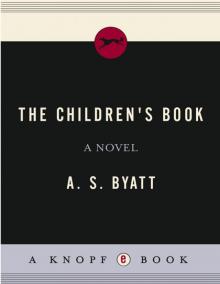 The Children's Book
The Children's Book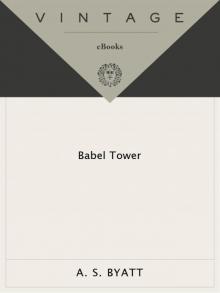 Babel Tower
Babel Tower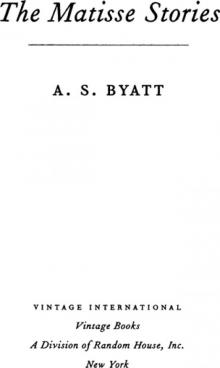 The Matisse Stories
The Matisse Stories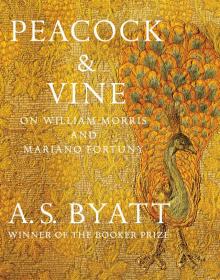 Peacock & Vine: On William Morris and Mariano Fortuny
Peacock & Vine: On William Morris and Mariano Fortuny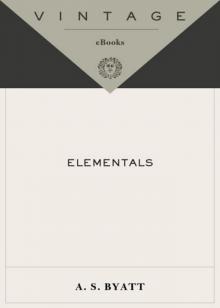 Elementals: Stories of Fire and Ice
Elementals: Stories of Fire and Ice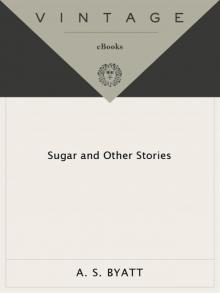 Sugar and Other Stories
Sugar and Other Stories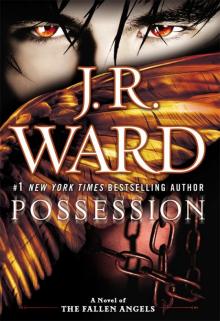 Possession
Possession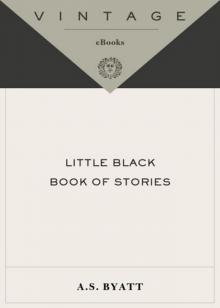 Little Black Book of Stories
Little Black Book of Stories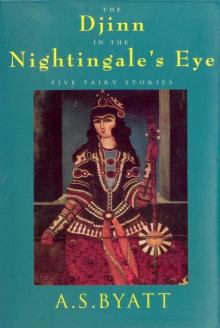 The Djinn in the Nightingale's Eye
The Djinn in the Nightingale's Eye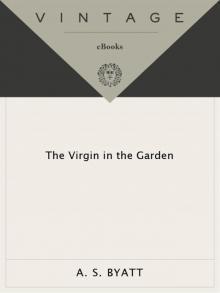 The Virgin in the Garden
The Virgin in the Garden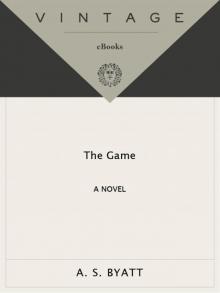 The Game
The Game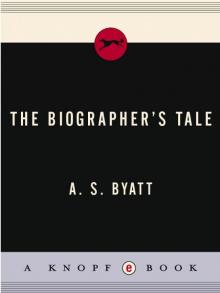 The Biographer's Tale
The Biographer's Tale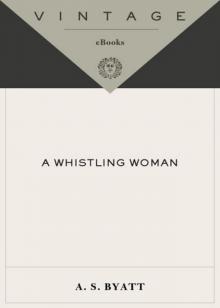 A Whistling Woman
A Whistling Woman Ragnarok
Ragnarok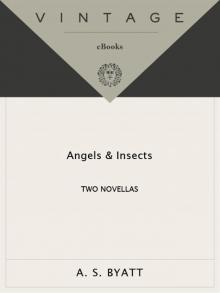 Angels & Insects: Two Novellas
Angels & Insects: Two Novellas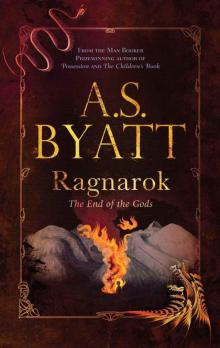 Ragnarok: the End of the Gods (Myths)
Ragnarok: the End of the Gods (Myths) Peacock & Vine
Peacock & Vine The Djinn in the Nightingale's Eye (Vintage International)
The Djinn in the Nightingale's Eye (Vintage International)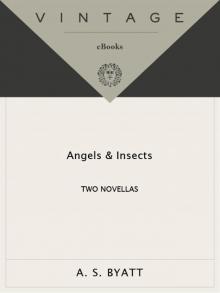 Angels and Insects
Angels and Insects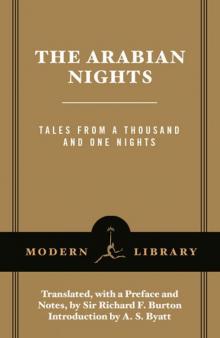 The Arabian Nights: Tales from a Thousand and One Nights (Modern Library Classics)
The Arabian Nights: Tales from a Thousand and One Nights (Modern Library Classics)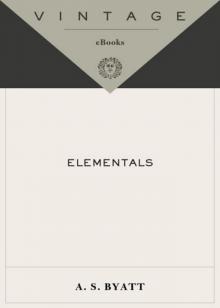 Elementals
Elementals